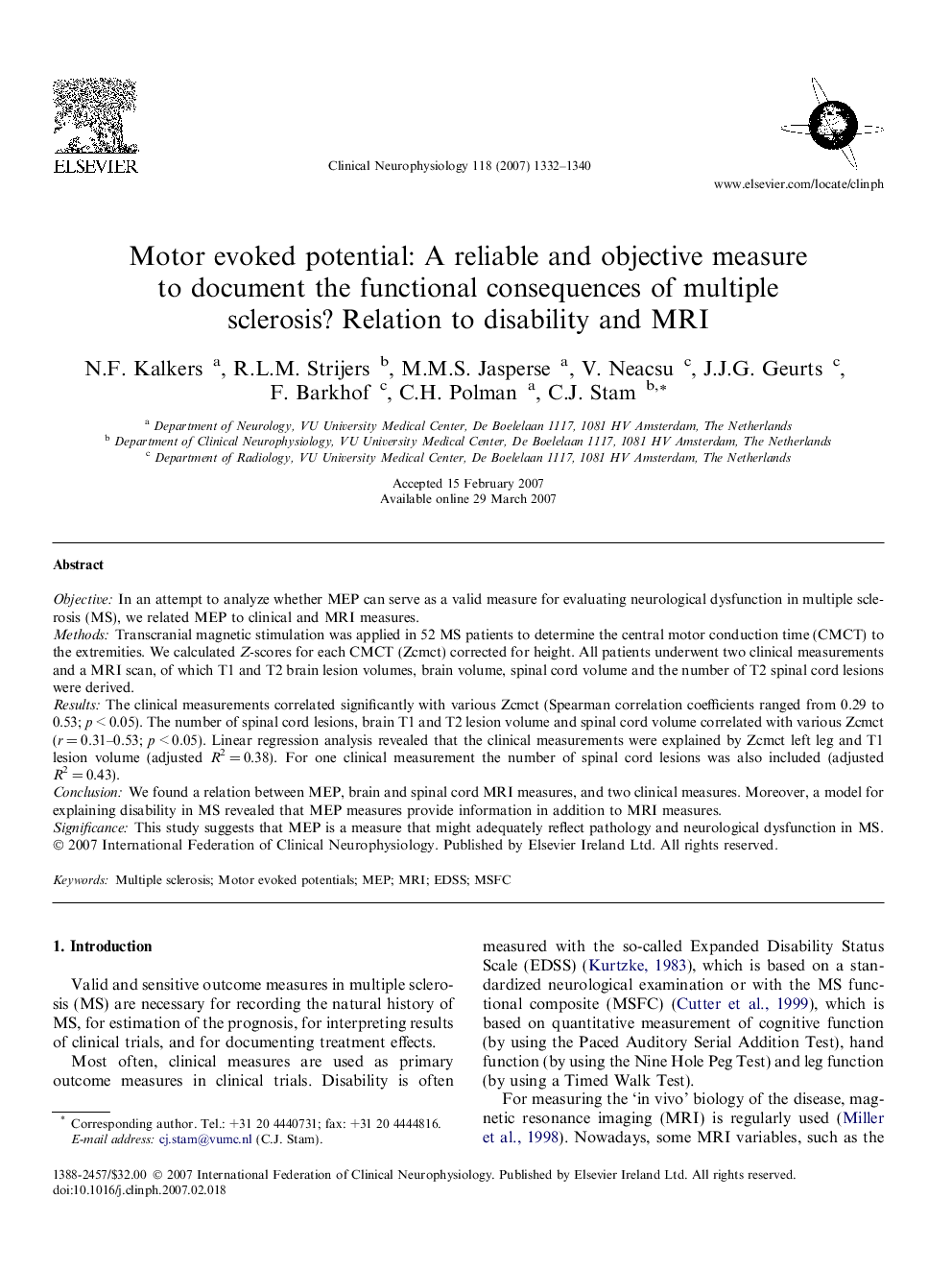| Article ID | Journal | Published Year | Pages | File Type |
|---|---|---|---|---|
| 3047708 | Clinical Neurophysiology | 2007 | 9 Pages |
ObjectiveIn an attempt to analyze whether MEP can serve as a valid measure for evaluating neurological dysfunction in multiple sclerosis (MS), we related MEP to clinical and MRI measures.MethodsTranscranial magnetic stimulation was applied in 52 MS patients to determine the central motor conduction time (CMCT) to the extremities. We calculated Z-scores for each CMCT (Zcmct) corrected for height. All patients underwent two clinical measurements and a MRI scan, of which T1 and T2 brain lesion volumes, brain volume, spinal cord volume and the number of T2 spinal cord lesions were derived.ResultsThe clinical measurements correlated significantly with various Zcmct (Spearman correlation coefficients ranged from 0.29 to 0.53; p < 0.05). The number of spinal cord lesions, brain T1 and T2 lesion volume and spinal cord volume correlated with various Zcmct (r = 0.31–0.53; p < 0.05). Linear regression analysis revealed that the clinical measurements were explained by Zcmct left leg and T1 lesion volume (adjusted R2 = 0.38). For one clinical measurement the number of spinal cord lesions was also included (adjusted R2 = 0.43).ConclusionWe found a relation between MEP, brain and spinal cord MRI measures, and two clinical measures. Moreover, a model for explaining disability in MS revealed that MEP measures provide information in addition to MRI measures.SignificanceThis study suggests that MEP is a measure that might adequately reflect pathology and neurological dysfunction in MS.
